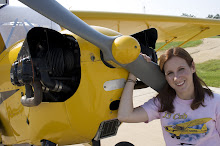For those of you who have followed along before, stay tuned for updates.
One of the most encouraging things I have read in aviation to date has been the FAA's review of FAR 23, which governs the certification of small aircraft. Over the years, FAR 23 has grown more extensive, mostly from the business jet sector, and these higher requirements have trickled down as far as the single-engine piston market.
Perhaps it's because most of my experience is in vintage aircraft, but I can't help but think that CAR 3 airplanes are still safely operating today, 60-70 years after being certified. I'm certainly not saying that the safety improvements made in the past decades haven't been worthwhile, but I have to wonder if imposing the costly Part 23 process on small aircraft manufacturers has really saved any lives. Airplanes are lasting way longer than we ever thought they would; in fact, I'm willing to wager that a higher percentage of 70-year-old airplanes are still in operation compared to 70-year-old cars. Mr. Piper was even quoted as saying the lifespan of a J3 would be 7 years--and the aircraft was essentially designed to be disposable after that expected period.
Yet, here we are, with thousands of J3s and their descendants safely puttering around. You can argue their lifespan has been lengthened by safety developments spurred by Part 23, and that by now the aircraft is probably nowhere near original, but the fundamental design has proven solid. Are we really gaining something by imposing draconian certification measures? Or are we simply discouraging innovation and smothering sales? Few other industries have as strong of a used product market as aviation. A strong used market makes new sales difficult, which means cash flow is minimized and innovations take longer to come to market or never make it at all.
Now, I'm not advocating planned obsolescence, but rather saying that, if manufacturers were free to pursue new developments more cheaply, they could and would respond more rapidly to market forces and capture customer attention better. Personally, I have no problem if the guy down the hangar row buys a new airplane every year. Increased new aircraft sales create a more competitive and, therefore, cheaper, used market which keeps older aircraft more accessible. Consumer needs coupled with tastes and preferences drive aircraft purchases. A cheaper, more streamlined certification process allows manufacturers to be more nimble in responding to changing tastes and preferences to better appeal to today's consumer (read: draw more people into aviation).
Essentially, aviation faces the conundrum of the mature domestic market. Growth is not occurring or occurring at such a slow rate it hardly counts as growth. Producers want to create products they can sell, but doing so is so costly that manufacturers elect not to pursue projects or new manufacturers never emerge due to these high costs.
The review of Part 23 will hopefully reduce the cost and time required for certification such that new products can be developed more cheaply and designed to meet more reasonable standards. Aircraft design has reached a state where structural failure is exceedingly rare, and airmanship continues to be the most lacking factor in improving flight safety. With that said, have we created an illusion of safety through expensive and unnecessary certification procedures? Have we been taught to rely upon product design more than our own skill? Has Part 23's primary accomplishment been to stifle innovation and new product release, while creating a product overbuilt and overpriced?
Food for thought.
--Amy
